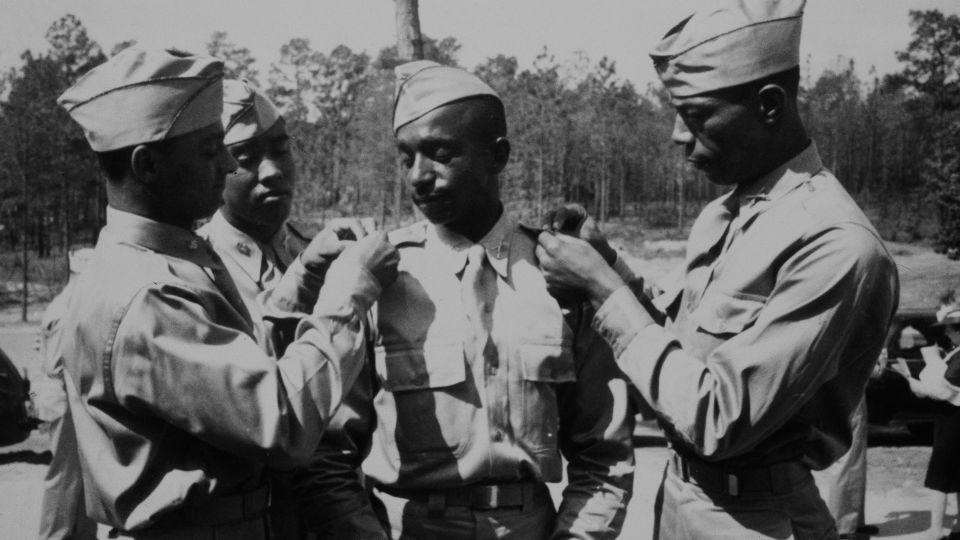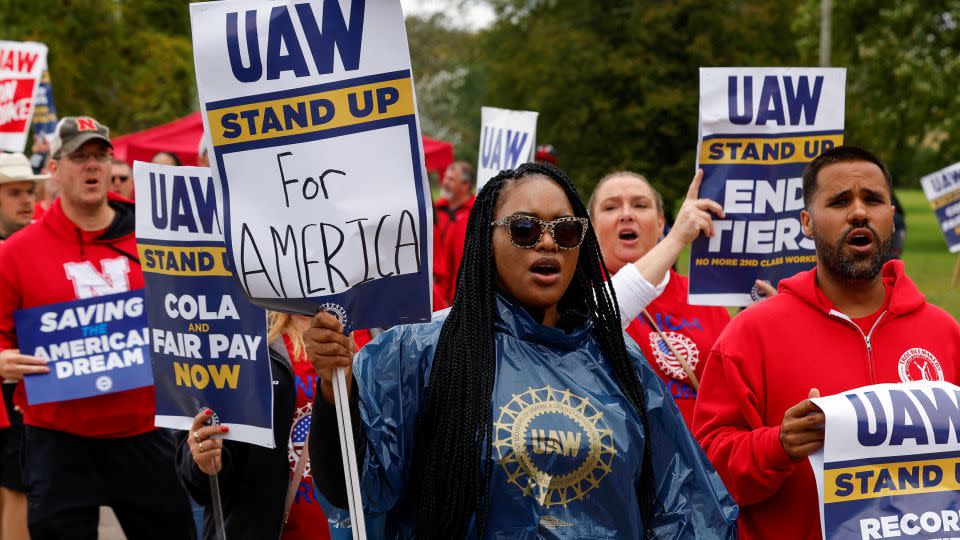The affirmative action battle shifts to a new front
Editor’s Note: A version of this story appeared in this week’s CNN’s Race Deconstructed newsletter. Sign up for free here.
Anyone who hoped the US Supreme Court’s recent decision on affirmative action in college and university admissions would likely stop at traditional higher education got an ominous sign this past week.
The US Naval Academy was sued October 5 over its race-conscious admissions practices by the same anti-affirmative action group whose lawsuits against Harvard and the University of North Carolina prompted the nation’s highest court to declare race-based admissions policies at such institutions unlawful.
The conservative group Students for Fair Admissions said in a 28-page lawsuit that the academy “has no justification for using race-based admissions.” SFFA argued that the academy’s policy of using race as a factor in admissions violated the US Constitution. The group had filed a September lawsuit against the US Military Academy at West Point, making similar arguments.
The Supreme Court ruled in June that colleges and universities could no longer take race into consideration as a specific basis for granting admissions — except for US military service academies. The lawsuits against the US Navy and West Point suggest that opponents of affirmative action are serious about eliminating any policy of diversity based on race.
It’s not surprising that the US Armed Forces have drawn criticism from affirmative action foes.
The military is the most integrated institution in America. Its leaders vigorously tout diversity efforts, insisting that inclusion ensures that the US has the best fighting force possible. The most integrated cities in America have a strong military presence, researchers have found. And the Defense Department runs many of the most integrated, and highest-achieving, schools for children in the nation.

The military aggressively recruits people of color. The top brass knows that racial integration never just happens — it needs buy-in from leaders. But conservative activists consider this approach unlawful, described in the SFFA filings for the Harvard lawsuit as “racial balancing,” in which Asian American applicants are held to higher standards than Black and Latino students.
“No one is suggesting diversity is a bad thing,” SFFA founder and legal strategist Edward Blum told CNN, “but just treating people differently because of their race and ethnicity, that’s a different element in the quest for diversity.”
The conservative legal movement insists that any effort to burden or benefit racial minorities that takes race into account is unconstitutional, and Blum, who is also the director of The Project on Fair Representation, has been initiating lawsuits against these policies on different fronts since the 1990s.
If the lawsuits against the military reach the Supreme Court and are successful, the changes they could unleash may be even more significant than the recent affirmative action ruling.
Meanwhile, a win for voting rights
The same conservative majority on the US Supreme Court that ended affirmative action in most higher education, however, delivered a surprising decision in June that affirmed voting rights protections for African Americans.
This past week, that decision was reaffirmed when a federal court approved a new congressional map in Alabama that boosts the Black population’s chance of electing a Democrat in the state.
The decision, which could help Democrats win back control of the US House of Representatives, could also influence similar court challenges to Republican-drawn maps now pending in Florida, Louisiana and Georgia.
The case made its way to the nation’s highest court after voting rights activists accused Alabama’s GOP-controlled legislature of drawing an earlier congressional map that diluted Black political power.
The court’s decision was significant because the Voting Rights Act, the 1965 law that outlaws racially discriminatory voting practices, has been on virtual life support due to several decisions by the high court.
The most notable decision — brought on by one of a series of lawsuits devised by none other than Blum — was the 2013 Shelby County v. Holder decision, in which a conservative majority eliminated a key enforcement mechanism of the act that had prevented states with a history of racial discrimination from targeting people of color at the ballot box.
The Shelby decision opened the floodgates for the passage of a wave of voter restriction laws in states that were previously covered by the Voting Rights Act. As the country heads into the presidential election year, more lawsuits invoking the Voting Rights Act are expected to follow.
Voting rights activists will anxiously watch those decisions to see whether the setback for conservative activists in Alabama was an aberration for the high court, or a new norm.
One more reason why a UAW victory matters
In other news: If you’ve been following along, you may recall that in last week’s newsletter, I took a closer look at why the United Auto Workers’ current strike against Detroit’s Big Three automakers is not just about workers versus corporate power, but also about race. This weekend, CNN’s Nathaniel Meyersohn wrote a story that explored another racial dimension of the UAW’s ongoing strike: the potential economic benefit of a labor victory to Black workers who have long relied on jobs at Detroit auto plants.

Meyersohn said Black people have relied on union auto jobs as “a crucial route to financial stability in America.” The percentage of Black workers in the auto industry today is more than double their share of the workforce overall.
“But the decline in US auto jobs and the erosion of unions have hit Black workers hardest,” he wrote. “Many have seen auto work move from being a stable career to little more than a wage job, ever since the United Auto Workers union agreed to concessions in 2007 and 2009 as automakers were barreling toward bankruptcy and federal bailouts.”
The stakes in the UAW strike are enormous for the future of the US auto industry. But Meyersohn’s story shows that the result of this strike could profoundly shape the lives of Black workers who used auto jobs as stepping stones to the middle class.
John Blake is the author of “More Than I Imagined: What a Black Man Discovered About the White Mother He Never Knew.”
For more CNN news and newsletters create an account at CNN.com

